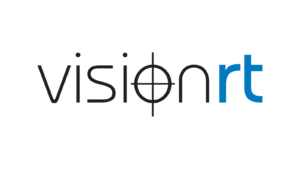
Welcome to this year’s US SGRT Community Meeting: Uncovering the Future of Motion Management!
This is the live event page for virtual attendees. No additional software is needed, apart from your browser, with javascript enabled (most are). The event will be streamed live in the window directly below- starting June 9th at 12pm ET and continuing on June 10th from 9 am ET. Enter the details you registered with to start the stream. If you haven’t registered, click here to sign up.
Please note the knowledge quiz and speaker details are below the virtual event screen.
If you have any technical problems, email us at secretary@sgrt.org.
Knowledge Quizzes
CE credits are allocated for each session you attend; in order to gain CE credits for the event, you must complete the correct knowledge quiz for the session(s) you have attended.
The score you must achieve in order to pass is listed at the top of the quiz page – if you do not achieve this mark on your first attempt, you may try again.
Please note, your attendance will be recorded when you log-in to view the sessions above.
If you are watching as part of a group, please ensure each member of the group has registered for the event here and completes the knowledge quiz independently. Please also provide a list of those who watched together to credits@sgrt.org after the event.
Please use the button below to access the knowledge quizzes.
Virtual product demos
Our Speakers

Hania Al-Hallaq, PhD, DABR, FAAPM
Hania Al-Hallaq, PhD, DABR, FAAPM is an Associate Professor in the Department of Radiation Oncology at the University of Chicago and Director of the Medical Physics Certificate program. She contributes to direct clinical care and development, education of graduate students and residents, and nationally to the AAPM and NRG. She has made numerous research contributions with 60 publications and has been a PI and collaborator for various grants. In 2017, she initiated the AAPM task group on surface guidance and worked with a team of dedicated SGRT users to publish it in 2022. During this process, she has published extensively on SGRT including at 2018 AAPM summer school and more recently in Dr. Van Dyk’s seminal book on “Modern Technology in Radiotherapy.” More recently, her research has focused on the safety and quality improvements afforded by SGRT.

Daniel Bailey, PhD
Daniel Bailey, PhD, DABR completed his graduate degrees and clinical residency through the Physics department at the State University of New York at Buffalo in collaboration with the Medical Physics program at the Roswell Park Cancer Institute, also in Buffalo, NY. Dan is actively involved in the AAPM, AAMD, and ABR professional organizations, and is currently the Director of Physics and Dosimetry for Sarah Cannon, the Cancer Institute of HCA Healthcare. His research and clinical-improvement activities include SRS, SBRT, SGRT, quality assurance and dosimetry techniques, total body irradiation, and improving the quality and safety of the modern radiotherapy workflow.

Vania Batista, Dr.
Dr. Vania Batista is Medical Physicist at the Radiation Therapy Department at the Heidelberg University Hospital. She earned her Masters’ degree in Physics Engineering at the Technical University of Lisbon (2008), a Masters’ degree in Medical Physics at the Heidelberg University (2016), and her Doctoral degree in medical physics also at the Medical Faculty of the Heidelberg University (2018). She worked as photon-radiotherapy and brachytherapy Medical Physicist in Portugal between 2009 and 2013, moving afterward to Germany, where she specialized in particle therapy and motion management techniques (2013-2016). Since 2016 she is working in photon-radiotherapy and keeps her main research interests in motion management and image-guided radiotherapy. She was co-chair of the ESTRO physics Workshop in 2019 about Surface-Guided Radiotherapy (SGRT) and is since then member of the European SGRT Working Group.

Alisha Chlebik, BSRT(T)
Alisha Chlebik, BSRT(T) a radiation therapist, has spent the last 12 years treating pediatric patients at Children’s Hospital Los Angeles. She has lent her expertise in this special patient population to academic and clinical research in the form of published articles and conference presentations. In addition, she is a clinical preceptor and has appeared as a guest lecturer at National University.

Cory Dallas, MS, DABR
Cory Dallas, MS, DABR is a busy clinical physicist in Radiation Oncology. She received by Master of Science from University of Wisconsin Madison and went to Minneapolis for a residency in Radiation Oncology at Abbott Northwestern Hospital. She joined the Abbott team and worked in the cancer center for 16 years. This year, she joined the M Health Fairview Cancer Center and supports St John’s and Woodwinds Hospitals. Cory has been a Vision RT SGRT user since 2015, and her clinic uses Surface Guided Radiotherapy with every patient.

Thu Flores, BSRT(T)(R)
Thu Flores, BSRT(T)(R) has served in the healthcare industry for 17 years. With 15 years of experience in Radiation Therapy, she assumed a leadership role as the Clinical Radiation Therapy Supervisor at UT MD Anderson Cancer Center in 2019. She recognizes that the field of radiation therapy has evolved immensely since the start of her therapy career, and she began partnering with Vision RT to adapt clinical practice to emerging technologies that benefit patients and staff. In the last 2 years, utilization of Vision RT has been implemented for breast treatments with prospects to expand further to other treatment sites.

Grace Gwe-Ya Kim, PhD, FAAPM
Grace Gwe-Ya Kim, PhD, FAAPM is a Professor and Senior Associate Director of Clinical Physics Operations. She also serves as the Technology Service Chief of the CNS Malignancies Disease Team. Dr. Kim is involved with numerous national committees through the American Association of Physicists in Medicine (AAPM), including the Therapy Physics Committee, the Quality Assurance & Outcome Improvement Subcommittee, the Working Group on RO-ILS, the Calibration Laboratory Accreditation Executive Committee, Task Group 262, Task Group 275, and Task Group 292 etc. She currently is the Chair of the AAPM Working Group on Prevention of Errors in Radiation Oncology and is a Physics committee member of the Radiosurgery Society.

Paul Jursinic, PhD
Paul Jursinic, PhD has been a radiation therapy medical physicist since 1991. He has done clinical medical physics work at the University of Wisconsin, Battle Creek Health System, The Medical College of Wisconsin, and West Michigan Cancer Center. Paul’s research interests have included: tissue compensators, brachytherapy quality assurance tools, the MapCHECK diode array, PIN diode dosimeters, optically stimulated luminescent dosimeters, and the AlignRT optical system.

Kham Nguyen, MBA, CMD, RT(T)
Kham Nguyen, MBA, CMD, RTT is an Associate Director, Procedural & Therapeutics at UT MD Anderson Cancer Center. She earned her MBA from West Texas A&M University, BS in Medical Imaging and Radiation Sciences – Radiation Therapy from the University of Oklahoma, and her second BS in Medical Dosimetry from UT MD Anderson School of Health Professions. Kham joined MD Anderson in 2012 as Medical Dosimetrist, and since that time she has taken on several roles with escalating leadership oversight. Her most recent role as Administrative Director, Radiation Oncology – Mays Clinic, has enabled her to lead multiple impactful projects such as new service introduction and clinic workflow optimization, and gain experience in technology assessment, acquisition, and operationalization.

David Park, MS, MBA, DABR
David Park, MS, MBA, DABR is a Lead Medical Physicist for the Northern Illinois Region of Advocate Aurora Healthcare (AAH). He has been practicing medical physics since 2008 and has led efforts at several institutions starting SRS and SBRT programs. David’s interests also involve emerging technologies and how they can be used to make the patient’s treatment more effective, as well as creating workflow efficiencies within the radiation oncology department. One of his main goals is to increase utilization of SGRT across AAH.

David Parsons, PhD
David Parsons, PhD received his Ph.D. from Dalhousie University in 2017 under the supervision of James Robar, Ph.D. He then completed his clinical training at UT Southwestern Medical Center’s Medical Physics Residency Program. Upon completion of residency he accepted a faculty position at UT Southwestern Medical Center. His research interests include image guidance in radiotherapy, motion management, novel treatment techniques and the use of Monte Carlo simulation in radiotherapy.

Brian Pogue, PhD, MSc
Brian Pogue, PhD has been a professor at Dartmouth College for 25 years. His research is within medical physics and biomedical engineering, with a core theme of advanced optical tools that allow for advances in surgical and radiation therapy guidance, photodynamic therapy, molecular imaging, and theranostics, which is the cutting-edge combination of the principles of therapeutics and diagnostics. Pogue earned his undergraduate and master’s degrees in physics from York University in Toronto, Canada, and his PhD in medical physics in 1996 from McMaster University in Canada. He completed a research fellowship at Harvard Medical School and Massachusetts General Hospital, prior to joining the faculty at Dartmouth. Pogue has published over 400 peer-reviewed journal articles and taught classes in electrical and biomedical engineering.

Ke Sheng, PhD
Ke Sheng, PhD is Professor and Associate Vice Chair of Physics Research at the Depart of Radiation Oncology, UCLA. He was trained as a medical physicist with a Ph.D. from the University of Wisconsin, Madison. His research covers a broad range of topics including treatment planning, optimization, image reconstruction, image registration and segmentation, and instrumentation. He has published over 130 peer-reviewed papers in relevant medical physics journals in the past 10 years and received 9 NIH grants and 2 DOE grants as PI or mPI. He is a Fellow of AAPM.

Eva Suarez, MD
Eva Suarez, MD currently serves as a Radiation Oncologist at the Cleveland Clinic Florida Maroone Cancer Center. She completed her undergraduate training in biomedical engineering at the University of Connecticut and gained experienced working as an engineer in military aviation before pursuing her medical degree at the University of Connecticut School of Medicine. Eva completed her residency at the Medical University of South Carolina in 2015 where she served as chief resident for 2 years. Her interests include implementing innovative new technologies to improve radiation delivery in breast and GI malignancies.

Michael Tallhamer, DABR
Michael Tallhamer is the Chief of Radiation Physics for Centura Health based out of Denver Colorado. He has served as a guest lecturer for various academic institutions on a variety of topics including Surface Guided Radiation Therapy (SGRT), stereotactic radiosurgery, and improvements to radiation oncology quality assurance programs using methods such as statistical process control (SPC). He is a past president of the Rocky Mountain Chapter of the AAPM (RMAAPM). He trained at the Cleveland Clinic where he received his MSc in Medical Physics specializing in Therapeutic Radiological Physics. He has been commissioning and utilizing SGRT systems in his clinics since 2008 and has been able to compared them to other systems such as CyberKnife, BrainLab, Varian OGP, and several frame based systems for SRS delivery. In addition to his clinical work he has a background in computer vision, mathematics and image processing and serves as a physics consultant who has worked on a variety of projects in medical physics, telecommunications and satellite imaging.

Ashley Towers, RT(T)
Ashley Towers, RT(T) graduated from Forsyth Technical Community College with an Associate of Applied Science for Radiation Therapy and soon after began working at High Point Medical Center. She worked at High Point Medical Center for nearly 20 years and began as a treatment therapist, then transitioned into the primary simulation therapist, and now department supervisor. Ashley thrives on the ever-evolving field of radiation oncology, learning new technology and new treatment techniques, and leading quality improvement initiatives. She is a busy mom of three incredible children, which consume all of her time, and she is grateful for it.


